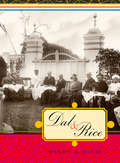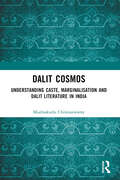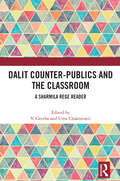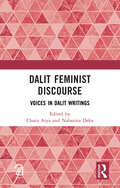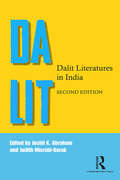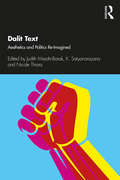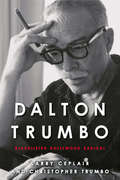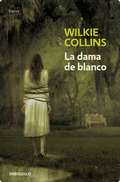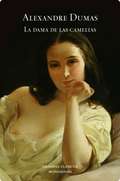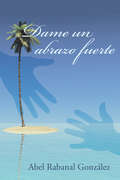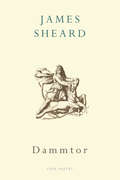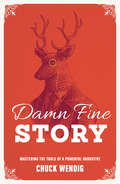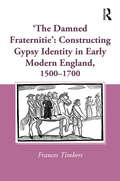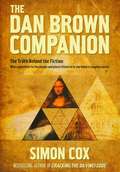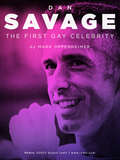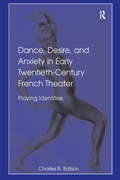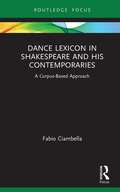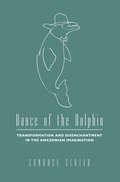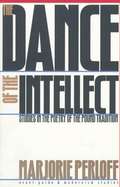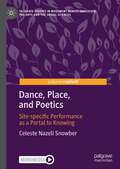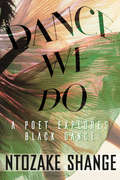- Table View
- List View
Dal and Rice (Footprints Series #8)
by Wendy M. DavisWendy Davis inherited this affection for India and its people. In Dal & Rice she chronicles the memories of her childhood and offers a poignant and measured character study of her father. Her story is part social history, part travelogue, but mostly a very personal account of a relationship with an exotic, chaotic, and often mysterious country.
Dalit Cosmos: Understanding Caste, Marginalisation and Dalit Literature in India
by Mudnakudu ChinnaswamyThis book is a fierce argument against social and caste discrimination in India, especially untouchability and emphatic call for social justice. Written by a first-generation Kannada Dalit writer, the book provides an insider’s view of caste discrimination as the author has lived through and experienced it. It traces the roots of present-day activism against caste discrimination, the influence of Ambedkar, the rise of Hindutva, and the role of Dalit literatures in shaping discourses around caste in India. An invigorating collection of essays and speeches by Mudnakudu Chinnaswamy, this volume will be of great interest to scholars and researchers of discrimination, literature, politics and political philosophy, exclusion studies, race, social justice, cultural studies, and South Asian studies.
Dalit Counter-publics and the Classroom: A Sharmila Rege Reader
by Uma Chakravarti V. GeethaThis book is an anthology of the collected essays of Sharmila Rege (1964 – 2013) that addresses themes to do with pedagogy and culture. Rege makes a compelling argument for rethinking the content of sociological knowledge and invokes in this context, Anticaste radical philosophies, associated with Mahatma Phule and Babasaheb Ambedkar as well as the writings of Dalit women. Equally, she seeks to rethink and engender the domain of Cultural Studies. She calls attention to 'Dalit counter-publics', comprising performance and commemorative traditions that are committed to ending the caste order and argues for a critical rethinking of the relationship between caste, sexuality, and popular culture.Framed and annotated by an introduction that places Sharmila's work in the intellectual and historical contexts that shaped it, the volume also features short prefatory notes by her colleagues on the various themes taken up for discussion. Addressing, as it does, the researcher, the activist and the teacher, the book is indispensable for students and researchers of Women’s Studies, feminism, gender studies, Dalit Studies, minority studies, Sociology, Cultural Studies, Performance Studies, as well as studies in language and rhetoric.
Dalit Feminist Discourse: Voices in Dalit Writings
by Charu Arya Nabanita DekaCharu Arya and Nabanita Deka’s edited book, Dalit Feminist Discourse: Voices in Dalit Writings documents Dalit voices from different regions and languages of India. Divided into three sections, the aim of this book is to foster a Dalit feminist discourse by reading Dalit writings. The contributors of the anthology in their respective chapters pick up different Dalit texts written by both Dalit men and women to analyse how Dalit women subjectivities have emerged over the years.The subject matter in this book covers the theories and history of Dalit feminism, poetry and writings by Dalit women, and also explores the politics of gender, society, and caste from the perspective of this section.Print edition not for sale in South Asia (India, Sri Lanka, Nepal, Bangladesh, Pakistan or Bhutan)
Dalit Literatures in India
by Joshil K. Abraham Judith Misrahi-BarakThis book breaks new ground in the study of Dalit literature, including in its corpus a range of genres such as novels, autobiographies, pamphlets, poetry, short stories and graphic novels. With contributions from major scholars in the field, alongside budding ones, the book critically examines Dalit literary production and theory. It also initiates a dialogue between Dalit writing and Western literary theory. This second edition includes a new Introduction which takes stock of developments since 2015. It discusses how Dalit writing has come to play a major role in asserting marginal identities in contemporary Indian politics while moving towards establishing a more radical voice of dissent and protest. Lucid, accessible yet rigorous in its analysis, this book will be indispensable for scholars and researchers of Dalit studies, social exclusion studies, Indian writing, literature and literary theory, politics, sociology, social anthropology and cultural studies.
Dalit Text: Aesthetics and Politics Re-imagined
by K. Satyanarayana Judith Misrahi-Barak Nicole ThiaraThis book, companion to the much-acclaimed Dalit Literatures in India, examines questions of aesthetics and literary representation in a wide range of Dalit literary texts. It looks at how Dalit literature, born from the struggle against social and political injustice, invokes the rich and complex legacy of oral, folk and performative traditions of marginalised voices. The essays and interviews systematically explore a range of literary forms, from autobiographies, memoirs and other testimonial narratives, to poems, novels or short stories, foregrounding the diversity of Dalit creation. Showcasing the interplay between the aesthetic and political for a genre of writing that has ‘change’ as its goal, the volume aims to make Dalit writing more accessible to a wider public, for the Dalit voices to be heard and understood. The volume also shows how the genre has revolutionised the concept of what literature is supposed to mean and define. Effervescent first-person accounts, socially militant activism and sharp critiques of a little-explored literary terrain make this essential reading for scholars and researchers of social exclusion and discrimination studies, literature (especially comparative literature), translation studies, politics, human rights and culture studies.
Dalton Trumbo: Blacklisted Hollywood Radical (Screen Classics)
by Larry Ceplair Christopher Trumbo&“Trumbo emerges from this well-rounded biography as a larger-than-life figure, not unlike the characters he scripted for the screen.&” —Publishers Weekly James Dalton Trumbo is widely recognized as a screenwriter, playwright, and author, but he is also remembered as one of the Hollywood Ten who opposed the House Un-American Activities Committee. Refusing to answer questions about his prior involvement with the Communist Party, Trumbo sacrificed a successful career in Hollywood to stand up for his rights and defend political freedom. In Dalton Trumbo, Larry Ceplair and Christopher Trumbo present their extensive research on the famed writer, detailing his work; his membership in the Communist Party; his long campaign against censorship during the domestic cold war; his ten-month prison sentence for contempt of Congress; and his thirteen-year struggle to break the blacklist. The blacklist ended for Trumbo in 1960, when he received screen credits for Exodus and Spartacus. Just before his death, he received a long-delayed Academy Award for The Brave One, and in 1993, he was posthumously given another for Roman Holiday. This comprehensive biography, which includes excerpts of Trumbo&’s letters, notes, and other writings, also provides insights into the notable people with whom Trumbo worked, including Stanley Kubrick, Otto Preminger, and Kirk Douglas, and a fascinating look at the life of one of Hollywood&’s most prominent screenwriters and his battle against persecution.
La dama de blanco
by Wilkie CollinsWalter Hartright se traslada a Limmeridge para dar clases de dibujo a Laura, una joven rica heredera sobrina del barón Frederick Fairlie. Poco antes de irse, tropieza con una misteriosa dama vestida de blanco que le habla de Limmeridge y de su propietaria fallecida, la señora Fairlie.Desde el principio Walter siente una gran atracción por Laura, quien está prometida con sir Percival Glyde, que solo busca arrebatarle su herencia. Solo se interpone en su camino la misteriosa dama de blanco.La dama de blanco, inspirada en un hecho real y publicada originalmente por entregas en una revista dirigida por Charles Dickens, ha constituido un éxito ininterrumpido de ventas en todas las lenguas. Todo ello se debe a una trama argumental magníficamente desarrollada, que envuelve al lector en una atmósfera de misterio e intriga; al increible ritmo narrativo que va imponiendo el autor conforme avanza la historia, y sobre todo a la profundidad psicológica de los personajes y a la gran capacidad descripiva de ambientes y situaciones.Junto con La piedar Lunar ha sido considerada, tanto por el público como por la crítica, una de las mejores novelas de misterio e intriga de todos los tiempos.
La dama de las camelias
by Alejandro DumasInspirándose en un personaje real, dibujó Alexandre Dumas (hijo) a «la dama de las camelias», una de las heroínas más seductoras de toda la literatura romántica, cuya «expresión virginal, incluso infantil» sobrenada en medio de su vida cortesana. El verdadero drama empieza cuando un respetable joven burgués se enamore de ella y ella decida aceptarlo.
La dama de las camelias
by Alejandro DumasInspirándose en un personaje real, dibujó Alexandre Dumas (hijo) a «la dama de las camelias», una de las heroínas más seductoras de toda la literatura romántica, cuya «expresión virginal, incluso infantil» sobrenada en medio de su vida cortesana. El verdadero drama empieza cuando un respetable joven burgués se enamore de ella y ella decida aceptarlo.
La dama del lago (Philip Marlowe #4)
by Raymond ChandlerAmor, pasión, celos... muerte. El perspicaz detective Philip Marlowe debe tirar del hilo de una maraña seria y salvaje. En La dama del lago (1943), la cuarta novela de Raymond Chandler, el detective Philip Marlowe investiga la desaparición de dos mujeres: Crystal Kingsley, esposa de un rico empresario, y Muriel Chess, mujer del vigilante de la finca de los Kingsley en el lago Little Fawn. En realidad a Marlowe no le importa lo que les haya ocurrido -no le pagan por su empatía-, pero descubrir la verdad será un imperativo cuando se dé cuenta de que su vida está en juego. Esta edición incluye también los tres relatos pulp publicados en las revistas Dime Detective y Detective Story que Chandler canibalizó para escribir la novela: «Blues de Bay City» (1938), «La dama del lago» (1939) y «No hay crímenes en las montañas» (1941). Reseña:«Sus libros deberían leerse y juzgarse no como literatura de evasión, sino como grandes obras de arte.»W. H. Auden
La dama oscura: La vida de Æmilia Bassano Lanyer, la mujer que Shakespeare amó en secreto y lo inspiró a escribir sus obras más famosas
by Cristina PerezLa vida de Æmilia Bassano, la mujer a la que Shakespeare amó en secreto, lo inspiró para escribir sus obras más famosas y que vivió limitada por las restricciones que el renacimiento inglés imponía pero que ahora sí puede ser puesta en primer plano y dada a conocer en todo su esplendor. En pleno siglo XVI, las mujeres casi no tenían derechos en Inglaterra. No sabían leer ni escribir. Æmilia Bassano Lanyer, nacida en una familia de músicos y con formación de princesa, iba a enfrentar un mundo donde hasta la reina Elizabeth I pagaba el precio de ser mujer. Æmilia llegó a la corte como intérprete musical y compositora, pero también como amante de uno de los hombres más poderosos del reino. Fue la primera mujer en publicar un libro en la literatura inglesa y eso la uniría con un poeta y dramaturgo que empezaba a descollar: William Shakespeare. Subyugado por la misteriosa belleza e intelectualidad de Æmilia, él dejaría en sus sonetos registro de ese amor. Allí la menciona crípticamente como "la dama oscura" y hay investigaciones que aseguran que fue coautora de algunas de sus obras e inspiración de historias de origen italiano como Romeo y Julieta. En esta novela, Cristina Pérez busca unir los puntos históricos de un amor que inventó el amor, y recrea un lenguaje y una atmósfera de época con ritmo contemporáneo. Una rigurosa investigación es el telón de fondo para desentrañar quién fue Æmilia Bassano Lanyer, una mujer encorsetada por los límites del renacimiento inglés que, sin embargo, estuvo por delante de su tiempo como pionera de la mujer moderna y libre.
Dame un abrazo fuerte
by Abel Rabanal GonzálezEl amor es el sentimiento más potente que pueden experimentar los seres humanos. ¿Cómo puede sentir el amor alguien que carece de sentimientos, una persona incapacitada para emocionarse, un ser con Síndrome de Asperger. <P><P>La ilusión de un padre por la llegada de su hijo se ve truncada al nacer éste con síndrome de Asperger: carencia de empatía con los demás, ausencia de emociones, incapacidad para los sentimientos, incomunicación con la sociedad. Tras la primera frustración, el progenitor lucha denodadamente contra su propia angustia, contra las trabas sociales y contra los problemas de su hijo. <P>Ha de librar una dura batalla para vencer los prejuicios de la gente, el propio desánimo y las reticencias del vástago. Como ocurre con todos los avatares de la vida, el esfuerzo y el amor permiten que el joven alcance al fin la felicidad: se despejan sus neuronas entumecidas y se despiertan sus sentimientos dormidos. <P>El amor triunfa a plenitud cuando el hijo se enamora de una muchacha, se descubren sus habilidades prodigiosas y el padre recibe el fuerte abrazo que había esperado toda su vida.
Dammtor
by James SheardDammtor is the old city gate and now the centre of ground transport for the great port of Hamburg. In James Sheard's second collection it is a 'station for midnights, hitched up on stone legs, hollow with sunken light' - a hub for the damaged and deracinated. These precise, wounded poems draw the reader through this desolate landscape - through sexual longing, sexual violence, bereavement and the beginning of hope through the birth of a son.Dammtor restlessly narrates the condition of maleness, looking for truth and music in a voice which is both urgent and unadorned. The poems are spoken in solitary places - late-night stations, hotel lobbies, car rides and empty woodland - but they are addressed to the living, the missing, the dead and the just-born. Personal and political narratives leak into the spaces of the poems to form a strange light which has something of the hallucinatory clarity of translations. The voice might be by turn elegaic, vicious, obsessive or bewildered as it explores its topic, but it is accompanied by an eye which will not - or, perhaps, cannot - blink. Finding tenderness amid brutality, Dammtor is a highly accomplished and remarkable collection.
Damn Fine Story: Mastering the Tools of a Powerful Narrative
by Chuck WendigHOOK YOUR AUDIENCE WITH UNFORGETTABLE STORYTELLINGWhat do Luke Skywalker, John McClane, and a lonely dog on Ho‘okipa Beach have in common?Simply put, we care about them.Great storytelling is making readers care about your characters, the choices they make, and what happens to them. It’s making your audience feel the tension and emotion of a situation right alongside your protagonist. And to tell a damn fine story, you need to understand why and how that caring happens.Using a mix of personal stories, pop fiction examples, and traditional storytelling terms, New York Times best-selling author Chuck Wendig will help you internalize the feel of powerful storytelling. In Damn Fine Story, you'll explore:Freytag's Pyramid for visualizing story structure - and when to break away from traditional storytelling formsCharacter relationships and interactions as the basis of every strong plot - no matter the form or genreRising and falling tension that pulls the audience through to the climax and conclusion of the storyDeveloping themes as a way to craft characters with depthWhether you're writing a novel, screenplay, video game, comic, or even if you just like to tell stories to your friends and family over dinner, this funny and informative guide is chock-full of examples about the art and craft of storytelling - and how to write a damn fine story of your own.
'The Damned Fraternitie': Constructing Gypsy Identity in Early Modern England, 1500–1700
by Frances Timbers'The Damned Fraternitie': Constructing Gypsy Identity in Early Modern England, 1500–1700 examines the construction of gypsy identity in England between the early sixteenth century and the end of the seventeenth century. Drawing upon previous historiography, a wealth of printed primary sources (including government documents, pamphlets, rogue literature, and plays), and archival material (quarter sessions and assize cases, parish records and constables's accounts), the book argues that the construction of gypsy identity was part of a wider discourse concerning the increasing vagabond population, and was further informed by the religious reformations and political insecurities of the time. The developing narrative of a fraternity of dangerous vagrants resulted in the gypsy population being designated as a special category of rogues and vagabonds by both the state and popular culture. The alleged Egyptian origin of the group and the practice of fortune-telling by palmistry contributed elements of the exotic, which contributed to the concept of the mysterious alien. However, as this book reveals, a close examination of the first gypsies that are known by name shows that they were more likely Scottish and English vagrants, employing the ambiguous and mysterious reputation of the newly emerging category of gypsy. This challenges the theory that sixteenth-century gypsies were migrants from India and/or early predecessors to the later Roma population, as proposed by nineteenth-century gypsiologists. The book argues that the fluid identity of gypsies, whose origins and ethnicity were (and still are) ambiguous, allowed for the group to become a prime candidate for the 'other', thus a useful tool for reinforcing the parameters of orthodox social behaviour.
Dan and Ed
by John Uss Cindy Peattie Marcin PiwowarskiTitle contained within StartUp Phonic Core Program. Not Sold Separately
The Dan Brown Companion
by Simon CoxWith its in-depth look at some of the themes and real-life stories behind the fiction, The Dan Brown Companion gives a unique insight into the world of one of the most successful bestselling novelists of our time.A huge Dan Brown following has emerged, determined to walk in the footsteps of his lead character Robert Langdon and to delve deeper into the fiction. Simon Cox, bestselling author of Cracking the Da Vinci Code and Illuminating Angels and Demons, now brings us this definitive guide.Questions are answered and plots thickened as we look for the clues that inspired Dan Brown. From the death of popes to the Priory of Sion, the mystery of Rennes-le-Château to the Illuminati, all the facts are finally laid bare.The Dan Brown Companion is an exceptional guide to the real world of mystery and intrigue that lies at the heart of the Robert Langdon novels and is a must-have for all Dan Brown fans.
Dan Savage: The First Gay Celebrity
by Mark OppenheimerThere are many Dan Savages: the author of the Savage Love advice column, syndicated around the country; the radio essayist beloved by This American Life fans; the author of a best-selling book about his gay marriage, and another about his son's open adoption; the prankster who ruined Rick Santorum's life; and the founder of the "It Gets Better" anti-bullying campaign. But never before have we glimpsed Savage's whole life, from his Catholic-school days, raised by a Chicago cop and a housewife, to his current role as a unique American character. For he is unique: while there are many gay and lesbian celebrities, nearly all of them, from Ellen DeGeneres to Elton John, began their careers in the closet. Savage, on the other hand, has always been out and proud. He is thus a pivotal figure in LGBTQ history -- and a fascinating man, brought vividly to life in this thrilling e-book.
Dance, Desire, and Anxiety in Early Twentieth-Century French Theater: Playing Identities
by Charles R. BatsonThe 1909 arrival of Serge de Diaghilev's Ballets Russes in Paris marked the beginning of some two decades of collaboration among littérateurs, painters, musicians, and choreographers, many not native to France. Charles Batson's original and nuanced exploration of several of these collaborations integral to the formation of modernism and avant-gardist aesthetics reinscribes performances of the celebrated Russians and the lesser-known but equally innovative Ballets Suédois into their varied artistic traditions as well as the French historical context, teasing out connections and implications that are usually overlooked in less decidedly interdisciplinary studies. Batson not only uncovers the multiple meanings set in motion through the interplay of dancers, musicians, librettists, and spectators, but also reinterprets literary texts that inform these meanings, such as Valéry's 'L'Ame et la danse'. Identifying the performing body as a site where anxieties, drives, and desires of the French public were worked out, he shows how the messages carried by and ascribed to bodies in performance significantly influenced thought and informed the direction of much artistic expression in the twentieth century. His book will be a valuable resource for scholars working in the fields of literature, dance, music, and film, as well as French cultural studies.
Dance Lexicon in Shakespeare and His Contemporaries: A Corpus Based Approach (Studies in Performance and Early Modern Drama)
by Fabio CiambellaThis book provides a thorough analysis of terpsichorean lexis in Renaissance drama. Besides considering not only the Shakespearean canon but also the Bard’s contemporaries (e.g., dramatists as John Marston and Ben Jonson among the most refined Renaissance dance aficionados), the originality of this volume is highlighted in both its methodology and structure. As far as methods of analysis are concerned, corpora such as the VEP Early Modern Drama collection and EEBO, and corpus analysis tools such as #LancsBox are used in order to offer the widest range of examples possible from early modern plays and provide co-textual references for each dance. Examples from Renaissance playwrights are fundamental for the analysis of connotative meanings of the dances listed and their performative, poetic and metaphoric role in sixteenth- and seventeenth-century drama. This study will be of great interest to Renaissance researchers, lexicographers and dance historians.
Dance of the Dolphin: Transformation and Disenchantment in the Amazonian Imagination
by Candace Slater<p>In folktales told throughout much of the Brazilian Amazon, dolphins take human form, attend raucous dances and festivals, seduce men and women, and carry them away to a city beneath the river. They are encantados, or Enchanted Beings, capable of provoking death or madness, but also called upon to help shamanic healers. Male dolphins—accomplished dancers who appear dressed in dapper straw hats, white suits, and with shiny black shoes—reportedly father numerous children. The females are said to lure away solitary fishermen. Both sinister and charming, these characters resist definition and thus domination; greedy and lascivious outsiders, they are increasingly symbolic of a distinctly Amazonian culture politically, socially, economically, and environmentally under seige. <p>Candace Slater examines these stories in Dance of the Dolphin, both as folk narratives and as representations of culture and conflict in Amazonia. Her engaging study discusses the tales from the viewpoints of genre, performance, and gender, but centers on them as responses to the great changes sweeping the Amazon today. According to Slater, these surprisingly widespread tales reflect Amazonians' own mixed reactions to the ongoing destruction of the rainforest and the resulting transformations in the social as well as physical landscape. Offering an informed view of Brazilian culture, this book crosses the boundaries of folklore, literature, anthropology, and Latin American studies. It is one of the very few studies to offer an overview of the changes taking place in Amazonia through the eyes of ordinary people.</p>
The Dance of the Intellect: Studies in the Poetry of the Pound Tradition
by Marjorie PerloffMust poetic form be, as Yeats demanded, "full, sphere-like, single", or can it accommodate the "impurities" Yeats and his Modernist generation found so problematic? Sixty years later, these are still open questions, questions to which Marjorie Perloff addresses herself in the essays collected here. The first group of essays deals with Pound's own poetics as that poetics related to two of his great contemporaries, Stevens and Joyce, as well as to the visual arts of his day. The second group deals with the more technical aspects of verse and prose. In the last four essays, Perloff takes up broader issues, including the current pessimism about the state of poetry, and the work of experimental poets and conceptual poets.
Dance, Place, and Poetics: Site-specific Performance as a Portal to Knowing (Palgrave Studies in Movement across Education, the Arts and the Social Sciences)
by Celeste Nazeli SnowberThis book explores the relationship between the body, ecology, place, and site-specific performance. The book is situated within arts-based research, particularly within embodied inquiry and poetic inquiry. It explores a theoretical foundation for integration of these areas, primarily to share the lived experiences, poetry and dance which have come out of decades of sharing site-specific performances.
Dance We Do: A Poet Explores Black Dance
by Ntozake ShangeIn her first posthumous work, the revered poet crafts a personal history of Black dance and captures the careers of legendary dancers along with her own rhythmic beginnings.Many learned of Ntozake Shange's ability to blend movement with words when her acclaimed choreopoem for colored girls who have considered suicide/when the rainbow is enuf made its way to Broadway in 1976, eventually winning an Obie Award the following year. But before she found fame as a writer, poet, performer, dancer, and storyteller, she was an untrained student who found her footing in others' classrooms. Dance We Do is a tribute to those who taught her and her passion for rhythm, movement, and dance.After 20 years of research, writing, and devotion, Ntozake Shange tells her history of Black dance through a series of portraits of the dancers who trained her, moved with her, and inspired her to share the power of the Black body with her audience. Shange celebrates and honors the contributions of the often unrecognized pioneers who continued the path Katherine Dunham paved through the twentieth century. Dance We Do features a stunning photo insert along with personal interviews with Mickey Davidson, Halifu Osumare, Camille Brown, and Dianne McIntyre. In what is now one of her final works, Ntozake Shange welcomes the reader into the world she loved best.
